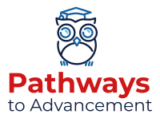As the demand for highly specialized skills grows in today’s fast-paced job market, traditional degree programs are no longer the only route to career advancement. Stackable credentials have emerged as a flexible, customizable approach to education and professional development. By allowing individuals to build their qualifications step-by-step, stackable credentials provide a way to tailor learning pathways that meet both personal and industry-specific needs.
This guide will help you understand what stackable credentials are, how they work, and why they’re gaining popularity. We’ll explore the different types of stackable credentials, their benefits, and how to use them strategically for career growth. Whether you’re looking to enhance your current skill set or transition to a new field, this article will show you how stackable credentials can pave the way to achieving your career goals.
Top Picks

Coursera
Certificate Programs from Coursera

edX
Earn a Microcredential from edX

Flatiron School
Coding Bootcamps from Flatiron School
What Are Stackable Credentials?
Stackable credentials refer to a series of smaller educational achievements—such as certificates, certifications, or microcredentials—that build upon each other to create a broader skill set or a higher-level qualification. Unlike standalone credentials, stackable credentials are interconnected and can be accumulated over time, allowing individuals to customize their education based on their evolving career aspirations.
How Stackable Credentials Work
Stackable credentials are designed to provide flexibility and modularity in learning. The concept revolves around breaking down traditional degrees into smaller, more manageable components. Each component represents a set of competencies or knowledge in a specific area and can be completed independently. Once a learner has completed one credential, they can move on to the next, “stacking” them to eventually obtain a larger qualification, such as a diploma or degree.
For example, you might start by earning a certificate in digital marketing, then add a specialization in social media marketing, and eventually complete a full professional certification that encompasses both areas. This progressive learning model allows you to stop, start, or change directions without losing the value of the credentials you’ve already earned.
Why Stackable Credentials Are Becoming Popular
There are several reasons why stackable credentials are gaining traction:
- Flexibility: Learners can progress at their own pace and integrate learning into their busy schedules.
- Affordability: By breaking down a full degree into smaller segments, learners can budget their education expenses more effectively.
- Relevance: Stackable credentials focus on the skills employers are looking for, making them highly applicable to the workforce.
- Adaptability: Professionals can continually update their skills to keep up with industry changes, making stackable credentials ideal for lifelong learning.
Types of Stackable Credentials
Academic Stackable Credentials
Academic stackable credentials are typically offered by colleges and universities. They include:
- Certificates: Short certificate programs that focus on a particular subject or skill. For example, a Certificate in Project Management could be the first step toward a Business Management degree.
- Associate Degrees: Often serve as a building block for a bachelor’s degree.
- Graduate Certificates: Post-bachelor’s programs that can count toward a master’s degree, allowing students to specialize in areas like cybersecurity, data analytics, or leadership.
Industry or Professional Stackable Credentials
These credentials are typically offered by industry associations or professional organizations. They focus on industry-specific skills and often lead to career advancement. Examples include:
- Professional Certifications: Credentials such as the Certified Public Accountant (CPA) or Project Management Professional (PMP) can be built upon with more specialized certifications.
- Digital Badges: Represent completion of specific skills or competencies and are often issued by learning platforms like Coursera or LinkedIn Learning.
- Licenses: Credentials required to work in certain professions (e.g., nursing or real estate) that can stack with other related credentials.
Hybrid Stackable Credentials
Hybrid stackable credentials combine elements of academic and professional learning. These are often developed in partnership between universities and industry organizations. For example, a technical certificate in web development might be co-created by a university and a tech company, blending theoretical and practical skills.
Benefits of Stackable Credentials
Flexibility in Learning Pathways
Stackable credentials allow learners to create customized educational pathways that fit their personal and professional needs. For example, someone interested in technology could start with a coding bootcamp, earn a certificate in software development, and eventually pursue pursue a full degree in data science.
Career Advancement and Skill Development
By targeting specific skill sets, stackable credentials enable professionals to fill gaps in their expertise, making them more competitive for promotions or new job opportunities. This upskilling approach allows learners to stay relevant and continually expand their capabilities.
Lower Cost and Reduced Time Commitment
Compared to full degree programs, stackable credentials are more affordable and less time-consuming. This is particularly beneficial for working adults who need to balance education with other responsibilities.
Enhanced Employability and Job Market Relevance
Because stackable credentials are typically aligned with in-demand skills, they make job seekers more attractive to employers. They provide concrete evidence of a learner’s competencies and are easier for hiring managers to evaluate.
Pathway to Higher Degrees
Stackable credentials don’t just stop at the certificate or certification level—they can be built up into more comprehensive qualifications, such as a bachelor’s or master’s degree. This makes them a practical option for lifelong learners.
How to Use Stackable Credentials for Career Advancement
Assessing Your Career Goals and Skills Gaps
Before pursuing stackable credentials, take time to assess your career goals and identify skills gaps. What roles are you aiming for? Which skills are you missing? Answering these questions will help you choose credentials that align with your professional objectives.
Planning Your Learning Pathway
Create a learning plan that maps out which credentials to pursue and in what order. Start with foundational skills, then progress to more advanced areas. For example, you might begin with a certification in data analysis, then add a specialization in machine learning, and ultimately pursue a degree in computer science.
Choosing the Right Program Providers
Not all stackable credentials are created equal. Research program providers to ensure that they’re reputable and recognized in your field. Consider the following:
- Academic Institutions: Are they accredited?
- Industry Certifications: Are they recognized by major employers?
- Online Platforms: What’s the quality of instruction and the rigor of assessments?
Using Stackable Credentials to Transition Careers
Stackable credentials are ideal for career changers. If you’re transitioning from marketing to IT, for instance, start by earning foundational IT certifications (e.g., CompTIA A+), then build on those with more specialized credentials like cloud computing or cybersecurity.
Challenges and Considerations of Stackable Credentials
Lack of Standardization
With so many different providers, stackable credentials lack standardization. This can make it difficult for learners to compare programs and for employers to assess their value.
Potential Employer Misunderstanding
Not all employers are familiar with the concept of stackable credentials. Some might not understand their value, making it crucial to communicate how your credentials align with job requirements.
Navigating Multiple Program Requirements
Pursuing multiple stackable credentials can be complex, with different prerequisites, scheduling, and costs to consider.
Balancing Time and Commitment
Because stackable credentials are often completed alongside full-time work, it’s important to ensure that you’re not overwhelmed by taking on too many credentials simultaneously.
Examples of Successful Stackable Credential Pathways
Academic Institutions Offering Stackable Credentials
Many universities now offer programs specifically designed for stackable learning. For example, the University of Michigan offers a series of data science certificates that can be stacked into a full master’s degree.
Industry and Corporate Partnerships
Companies like IBM and Google have partnered with learning platforms to offer stackable credentials that lead directly to job opportunities. Google’s IT Support Professional Certificate, for example, can stack into more advanced IT certifications.
Online Learning Platforms
Online learning platforms like Coursera and edX are leading the way in stackable credentials. Their MicroMasters and Professional Certificates are designed to be modular and can often count toward degree programs.
The Future of Stackable Credentials
Trends in Education and Workforce Development
As the demand for lifelong learning grows, stackable credentials are expected to become even more prevalent in both higher education and corporate training.
Expansion into Lifelong Learning
Stackable credentials are set to play a significant role in lifelong learning, providing a flexible, cost-effective way for professionals to stay current in their fields.
Potential Impact on Traditional Degree Models
Stackable credentials could reshape traditional degree programs, offering more customizable, competency-based learning pathways.
Takeaways
Stackable credentials offer a powerful way to build skills, advance in your career, and stay competitive in an ever-changing job market. By stacking smaller credentials over time, you can achieve larger career goals without a significant time or financial commitment. Whether you’re looking to upskill, reskill, or explore a new career path, stackable credentials provide a flexible and strategic route to success.



